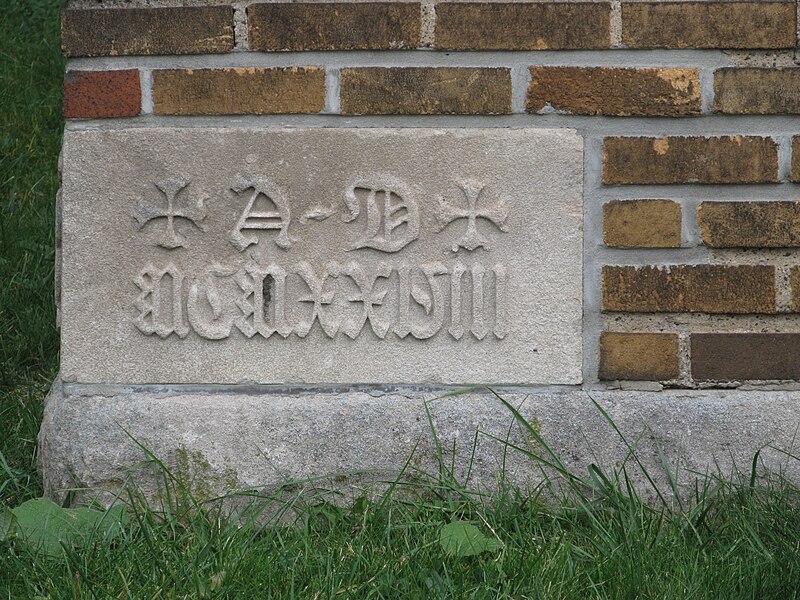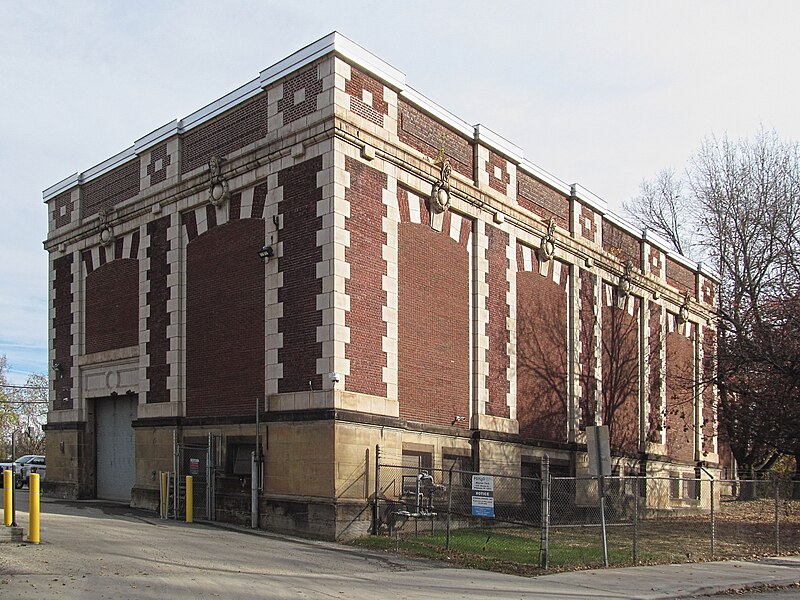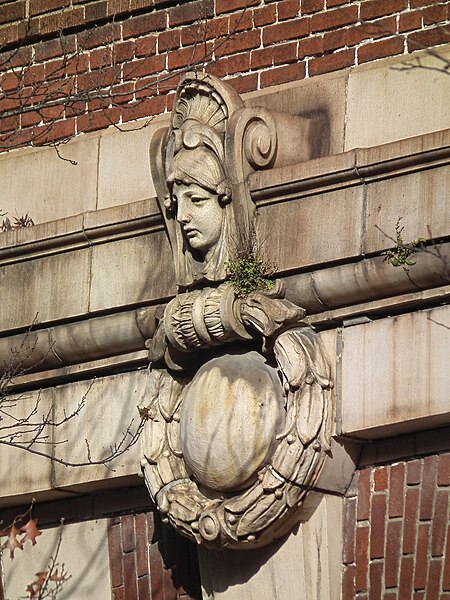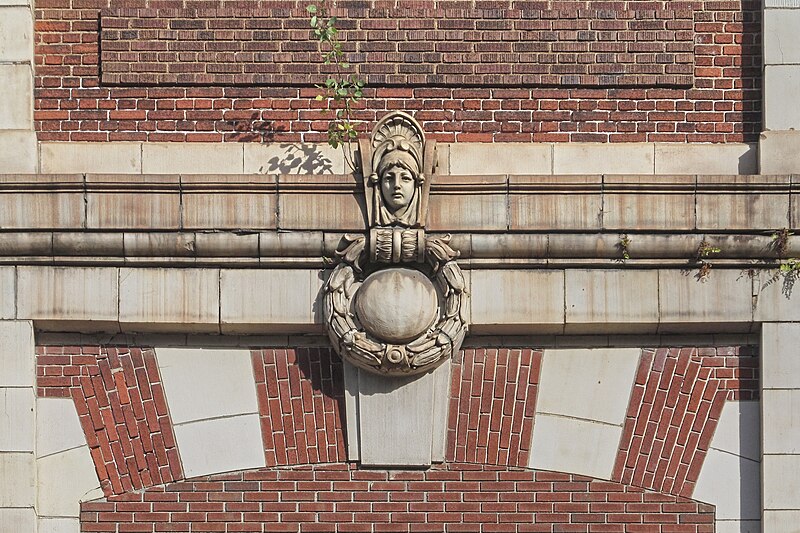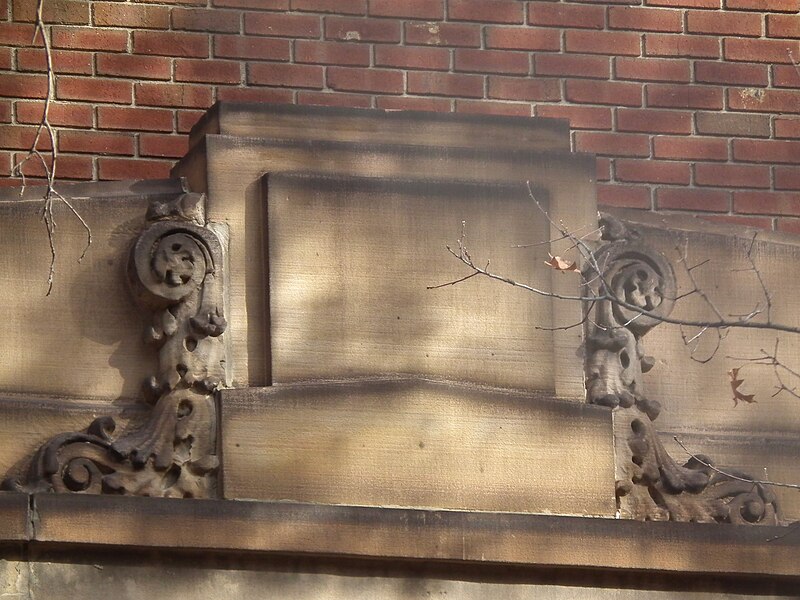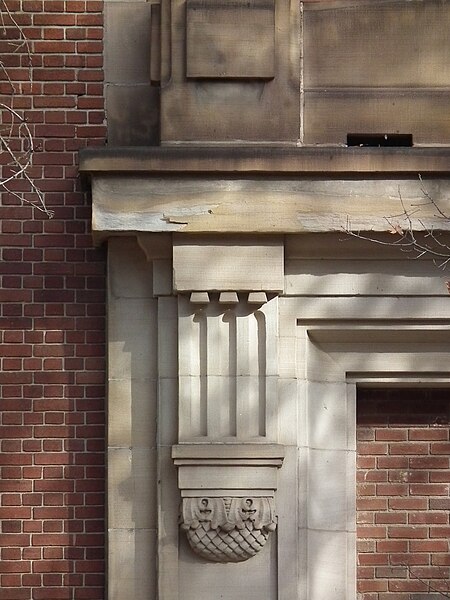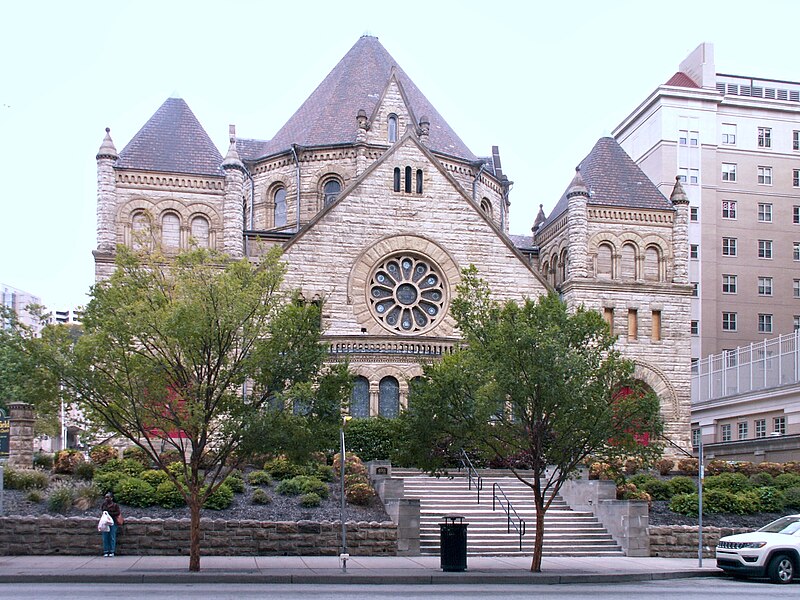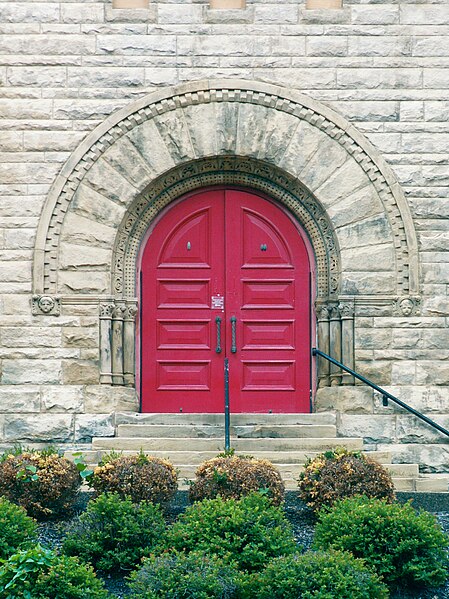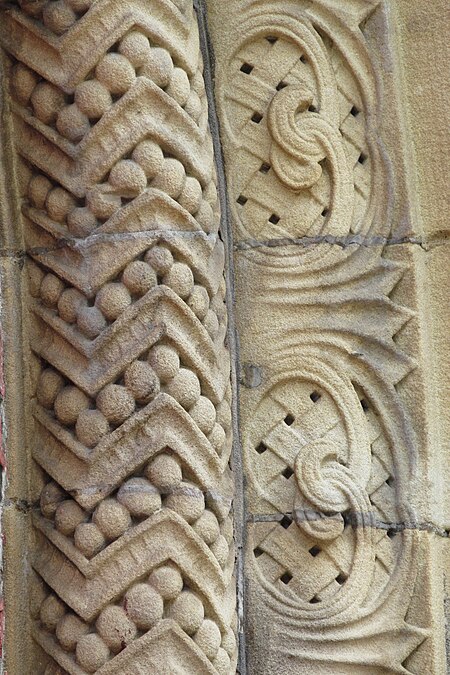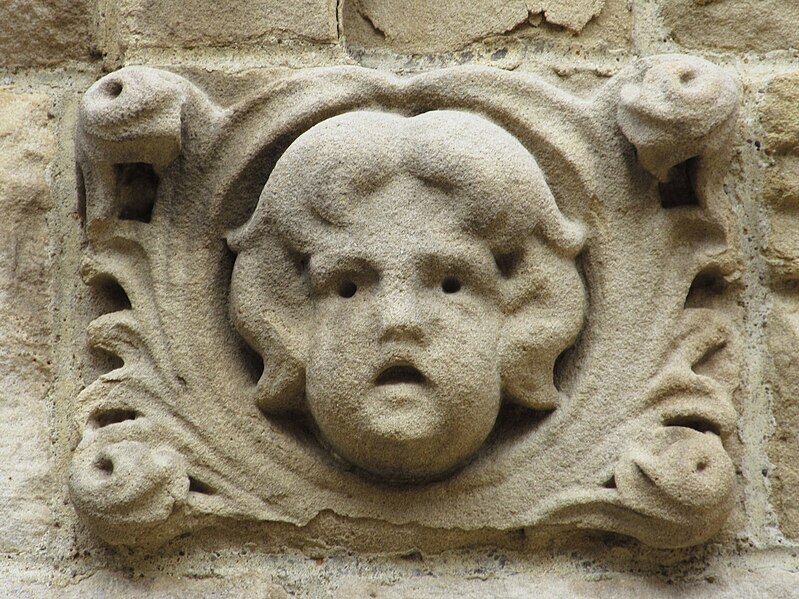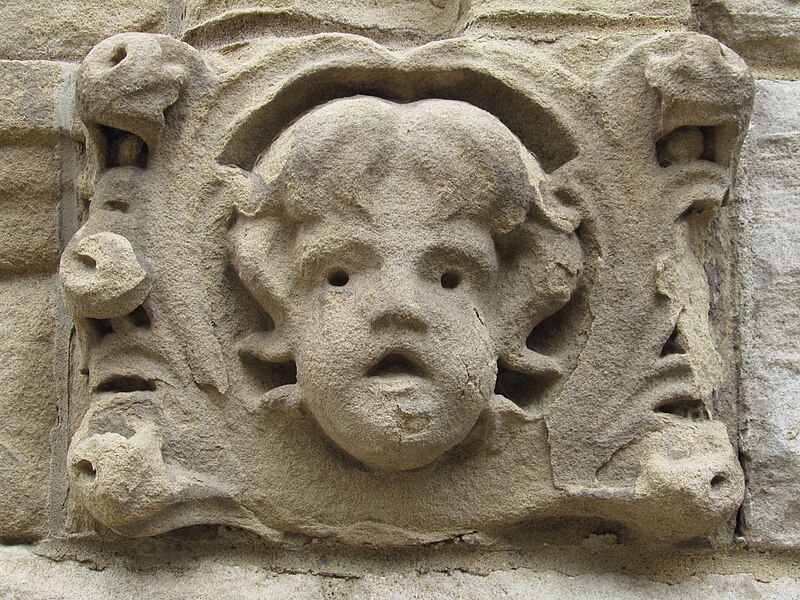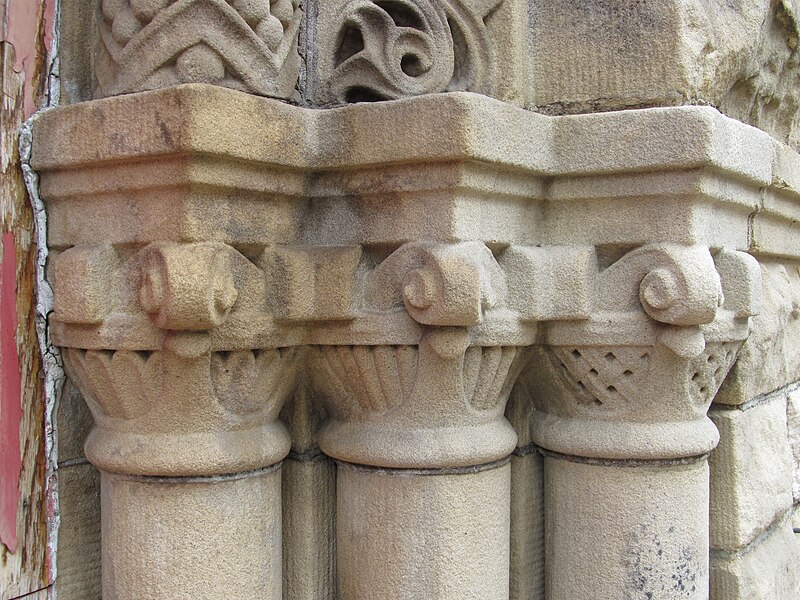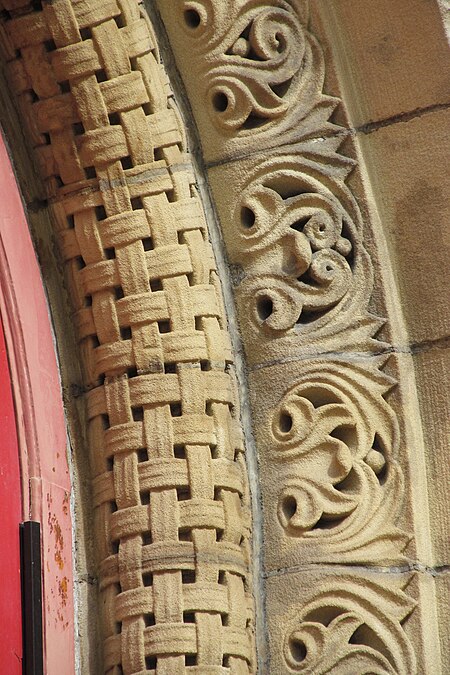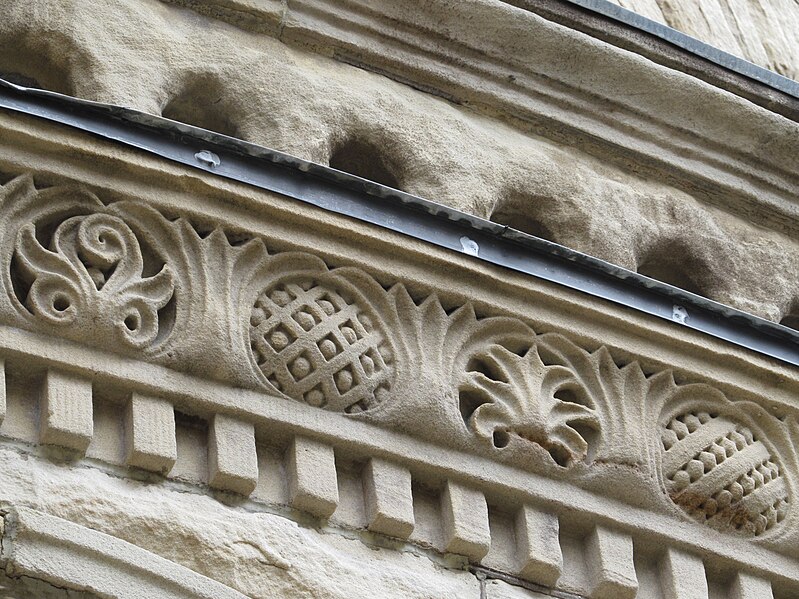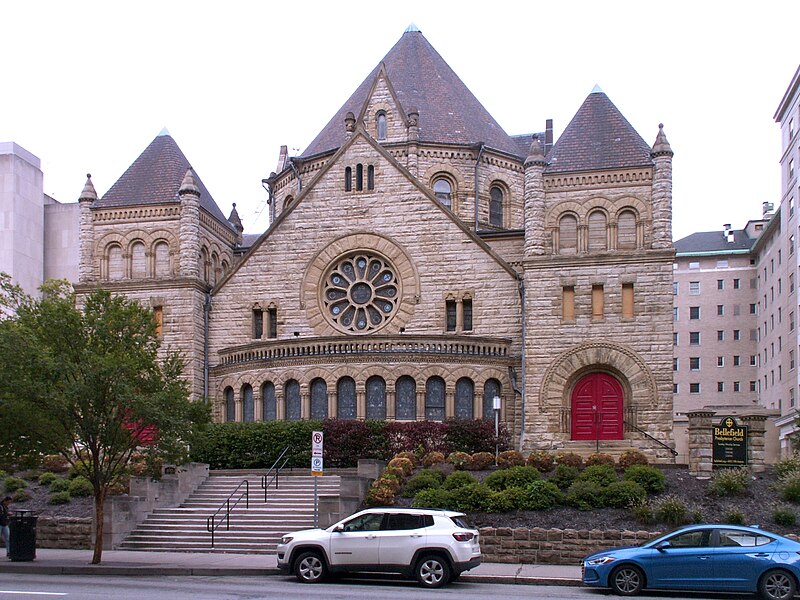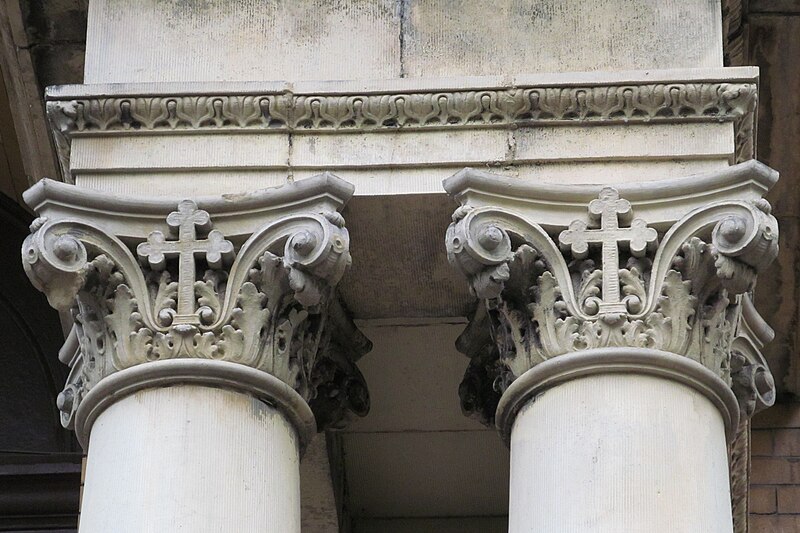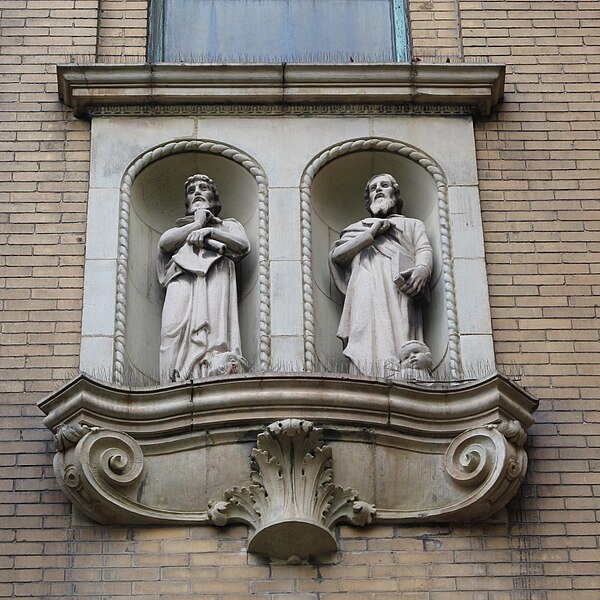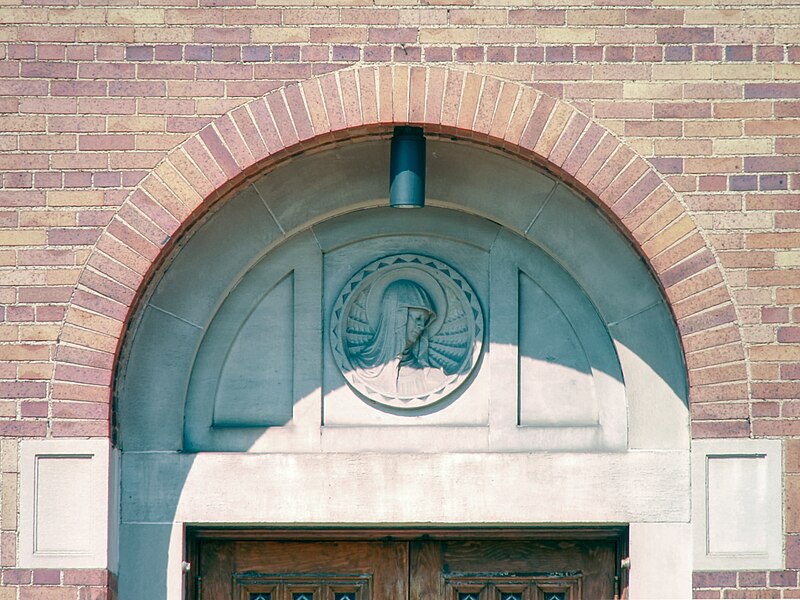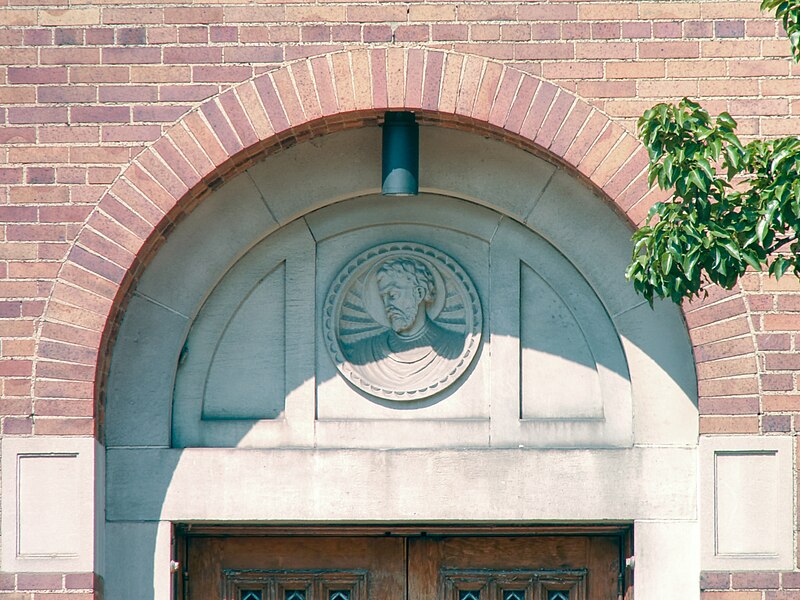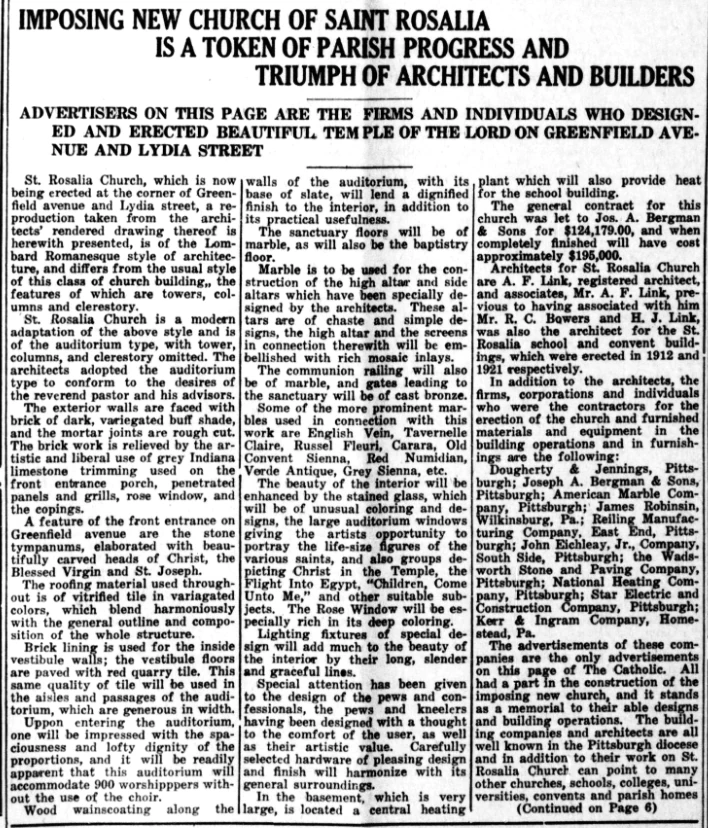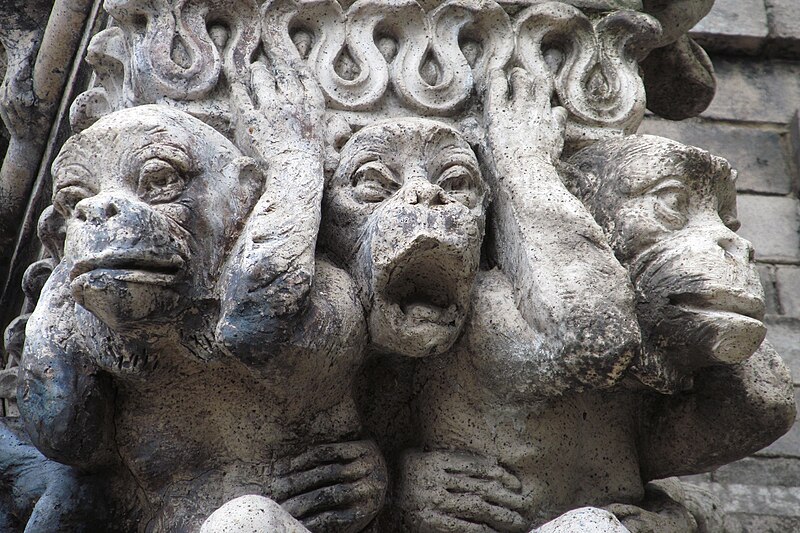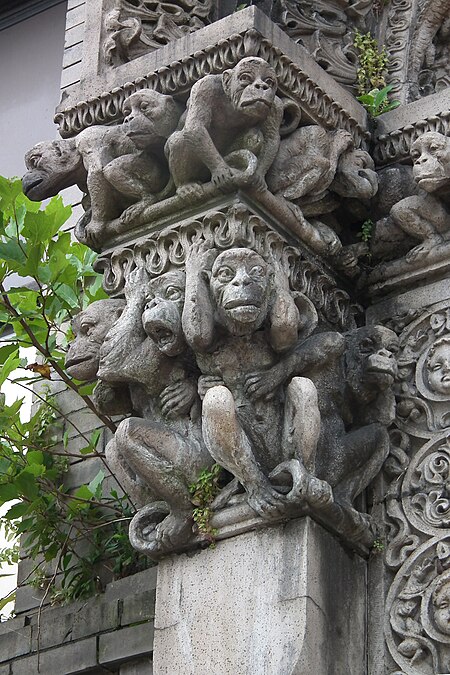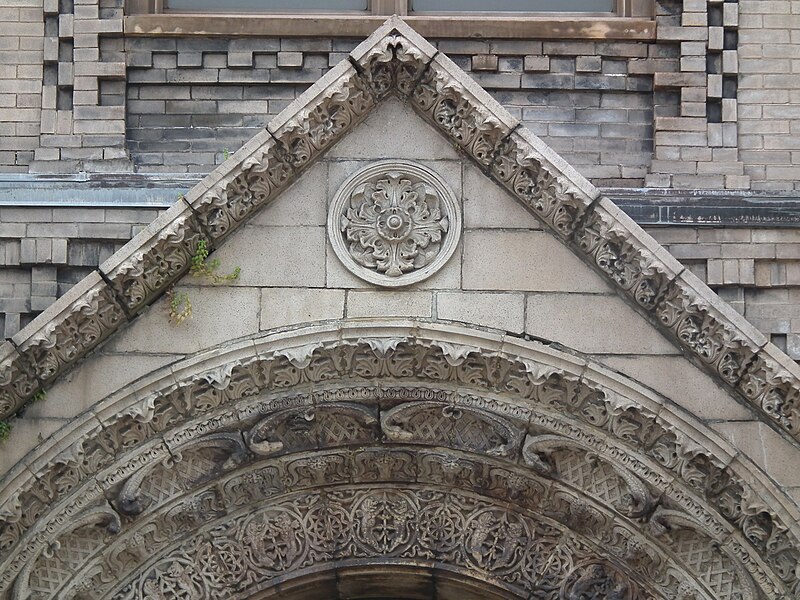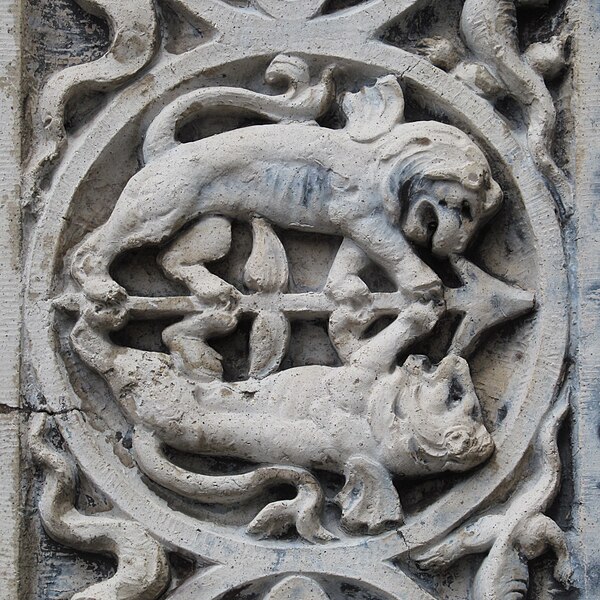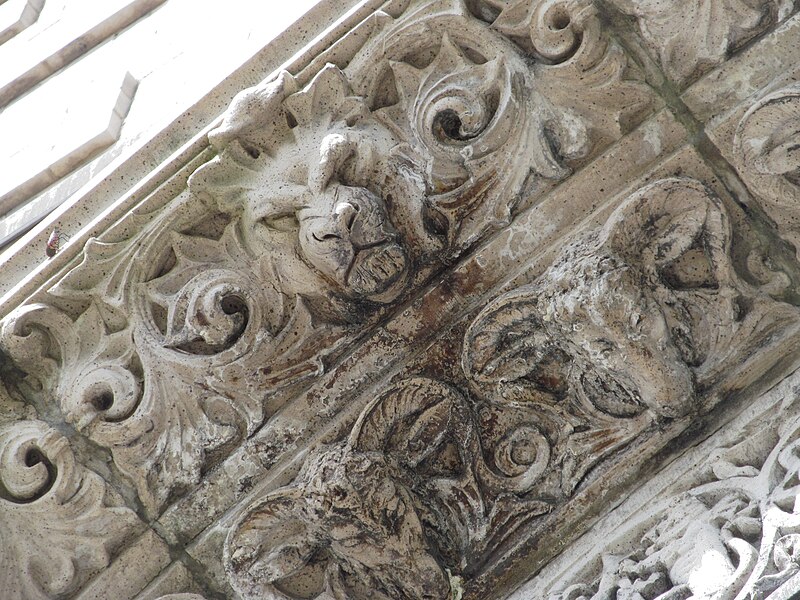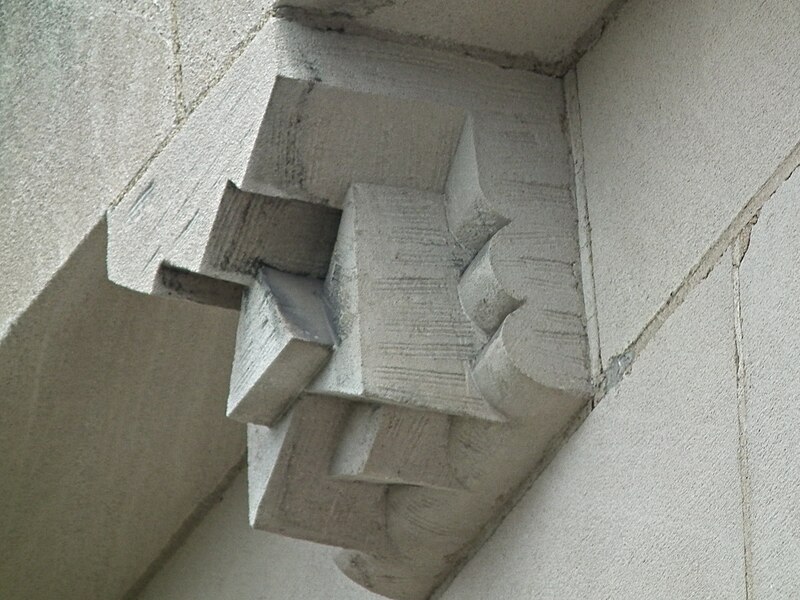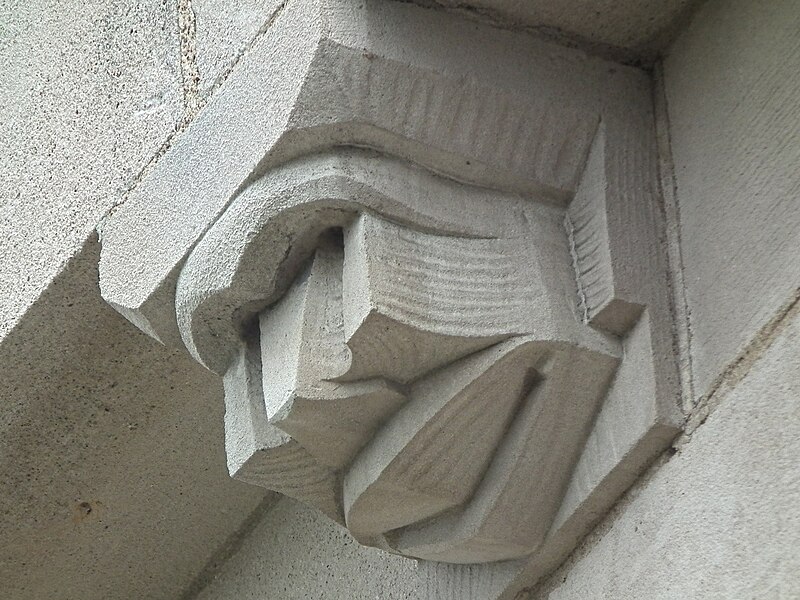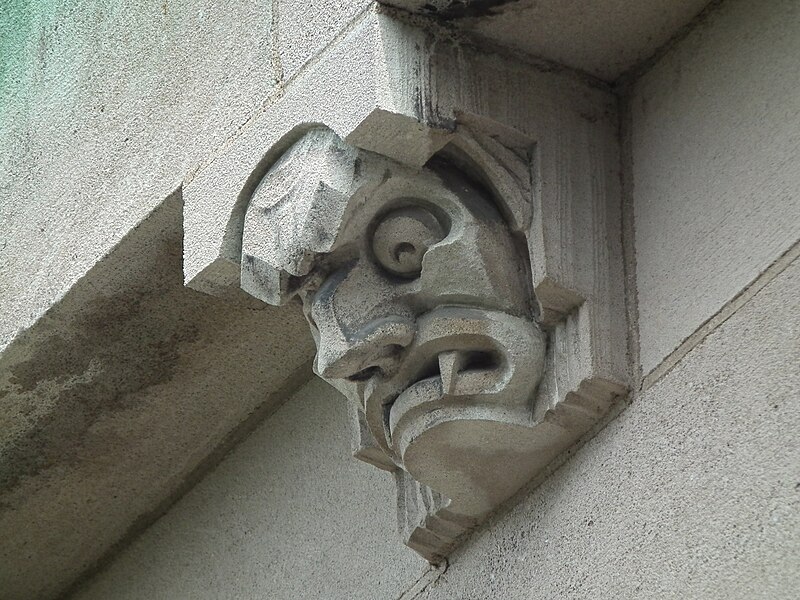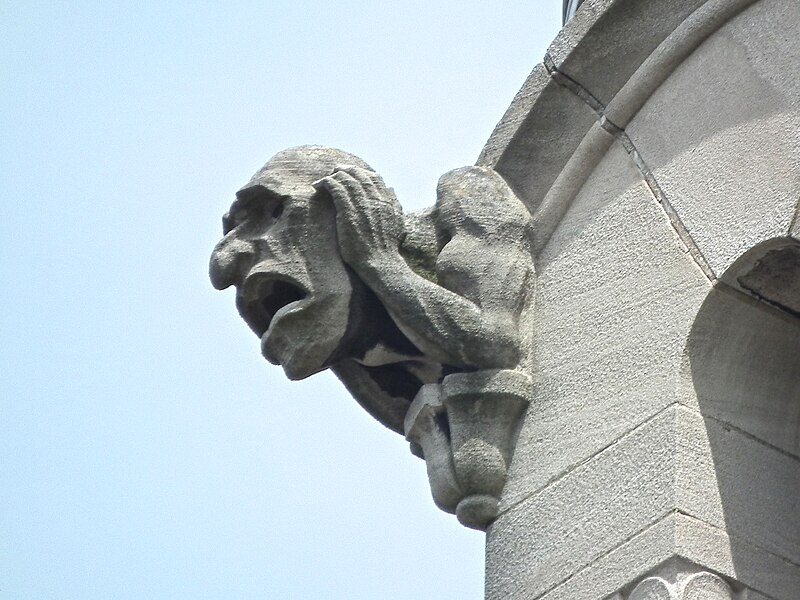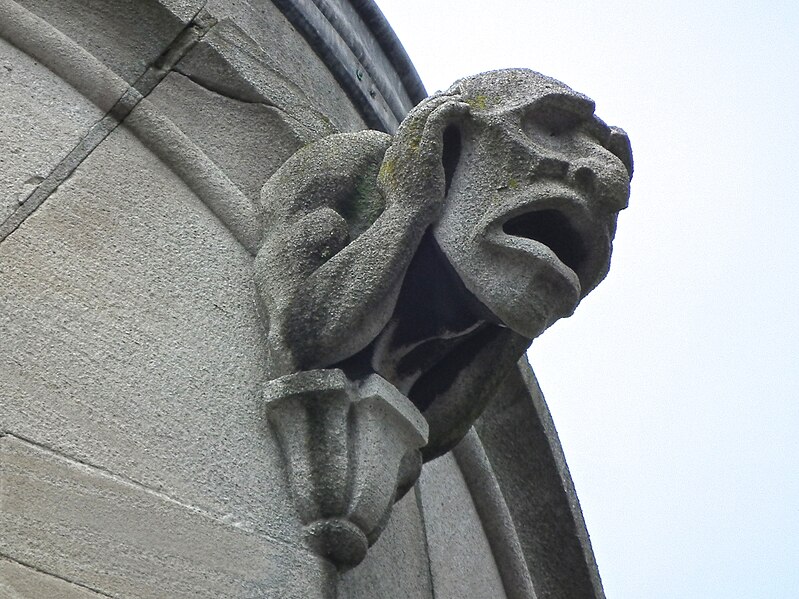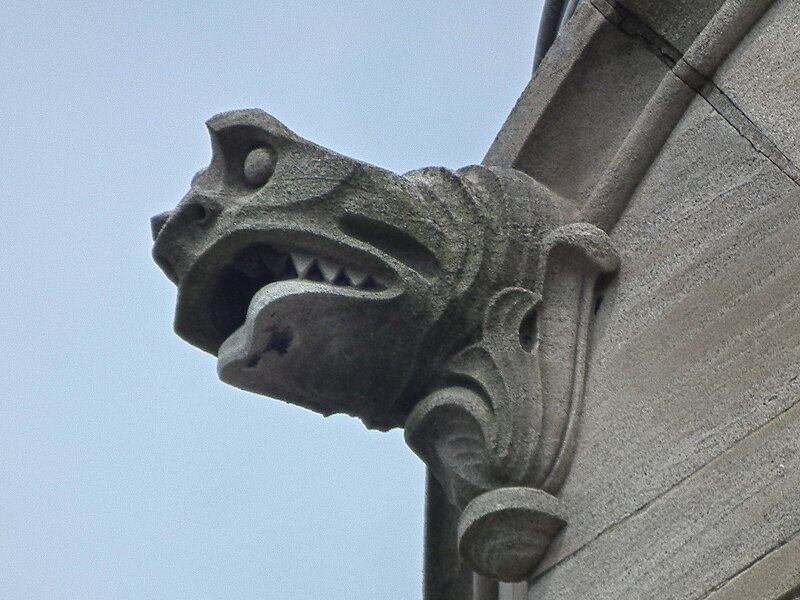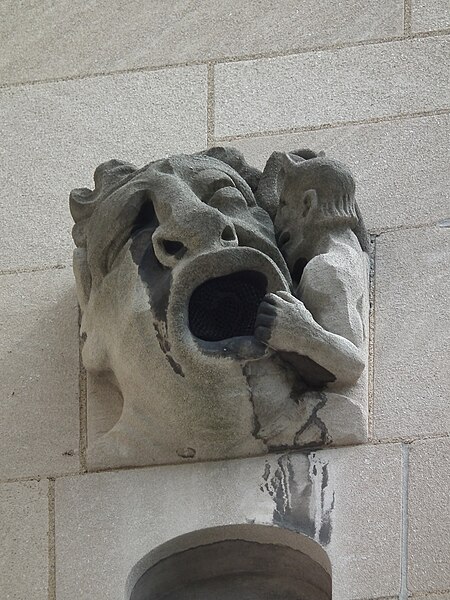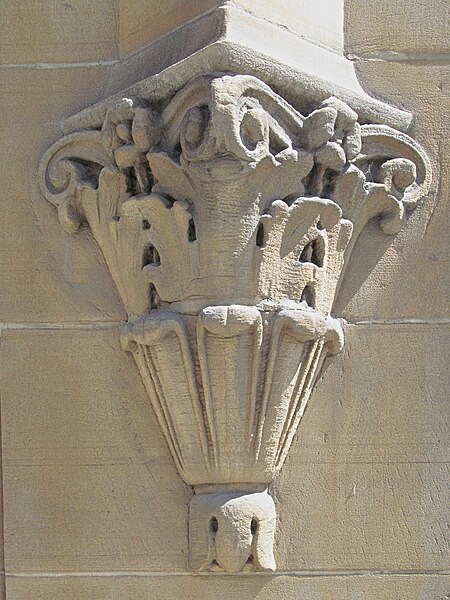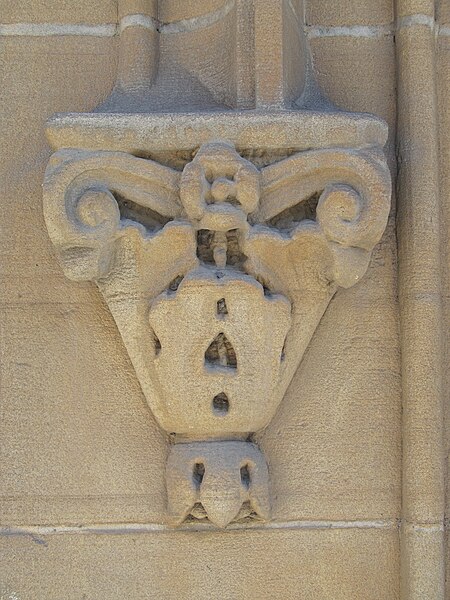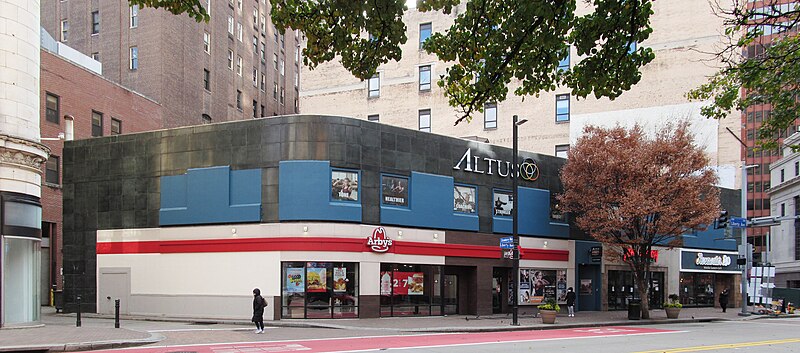
The Liberty Avenue face of this building has been modernized and remodernized so many times that no one would take it for anything remarkably old. But it is actually one of the very few commercial buildings remaining downtown from the Civil War era. It was built in about 1865 for Arbuckle & Company, a dealer in coffee and sugar in the days when Liberty Avenue was the wholesale food district, with a railroad running right down the middle to bring the food in at its freshest. And if you will come around the back with us, you will see one of Pittsburgh’s odd little hidden treasures.

The short alley behind the building is still called Coffey Way, and the back of the Arbuckle building shows the very old bricks we might expect. And among those bricks, in an alley that hardly anyone even knows about, we find “some of the oldest surviving architectural sculpture in the city,” according to Discovering Pittsburgh’s Sculpture by Marilyn Evert.

These medallions are obviously meant to represent specific figures, but no one is quite sure which specific figures. This one has been identified as George Washington or Colonel Bouquet (the one who built the blockhouse).

This keen-eyed lady has been identified as Jane Grey Swisshelm or Mary Croghan Schenley.
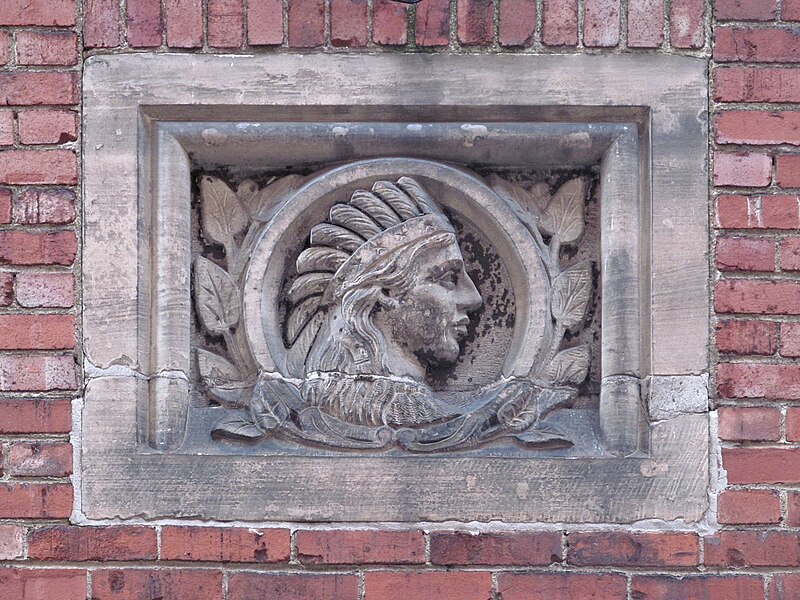
This is probably an allegorical head of Liberty, although it has also been identified as an “Indian head” of the sort common on nineteenth-century coins.

This one is very likely to be Abraham Lincoln, but “very likely” is the most certainty we can summon up. It could also be John Arbuckle himself, the head of the firm, who appears in a later photograph with a beard and distinctively hollow cheeks. We note that this is the only one of the faces turned left instead of right; if you like to find symbolism in things like that, go ahead.
John Arbuckle, incidentally, was the inventor of processes for preserving coffee and automating its packaging, so we may regard him as the founder of coffee as a mass-produced consumer product. This little alley, therefore, ought to be on every coffee-lover’s pilgrimage list.


